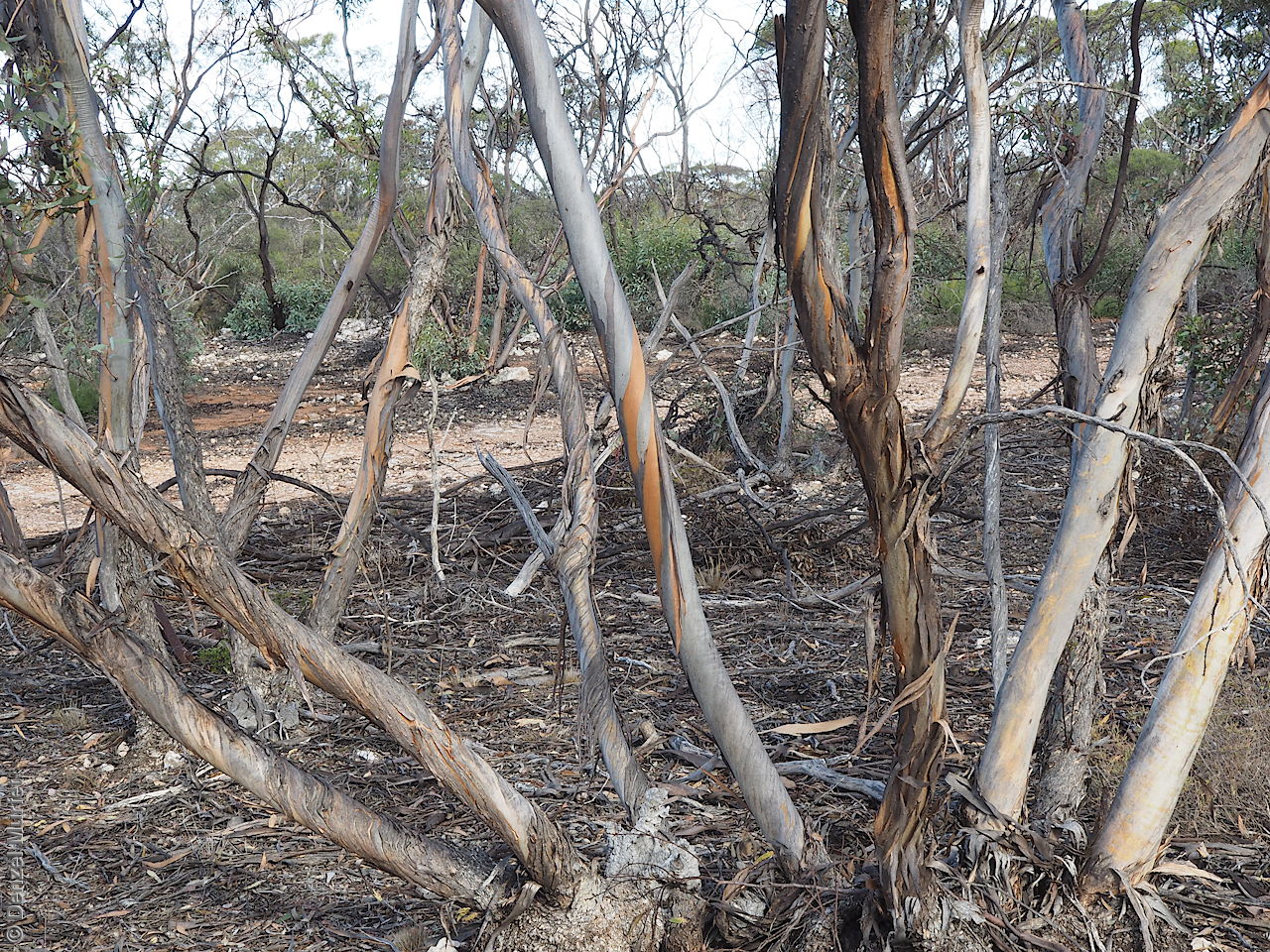
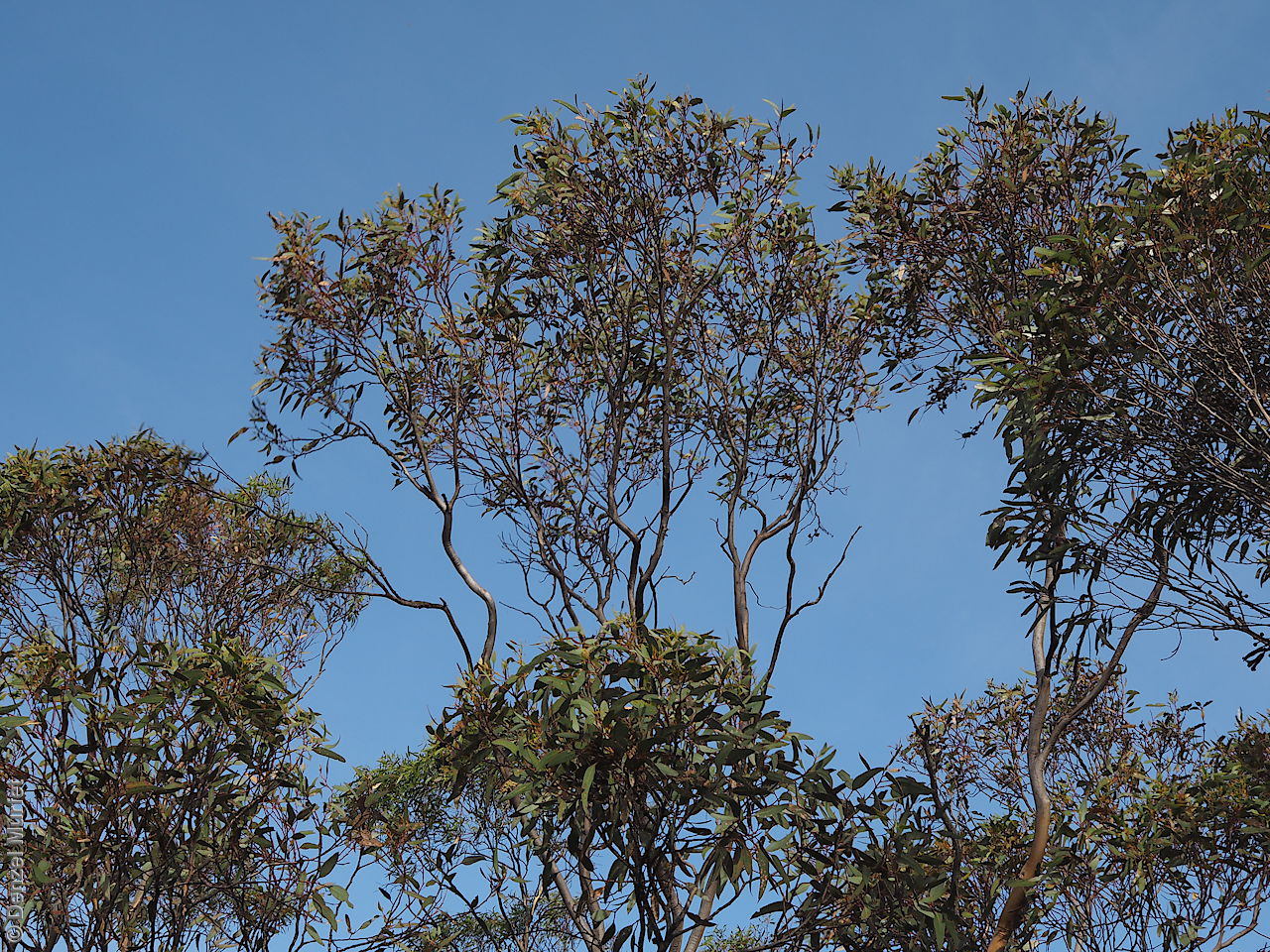
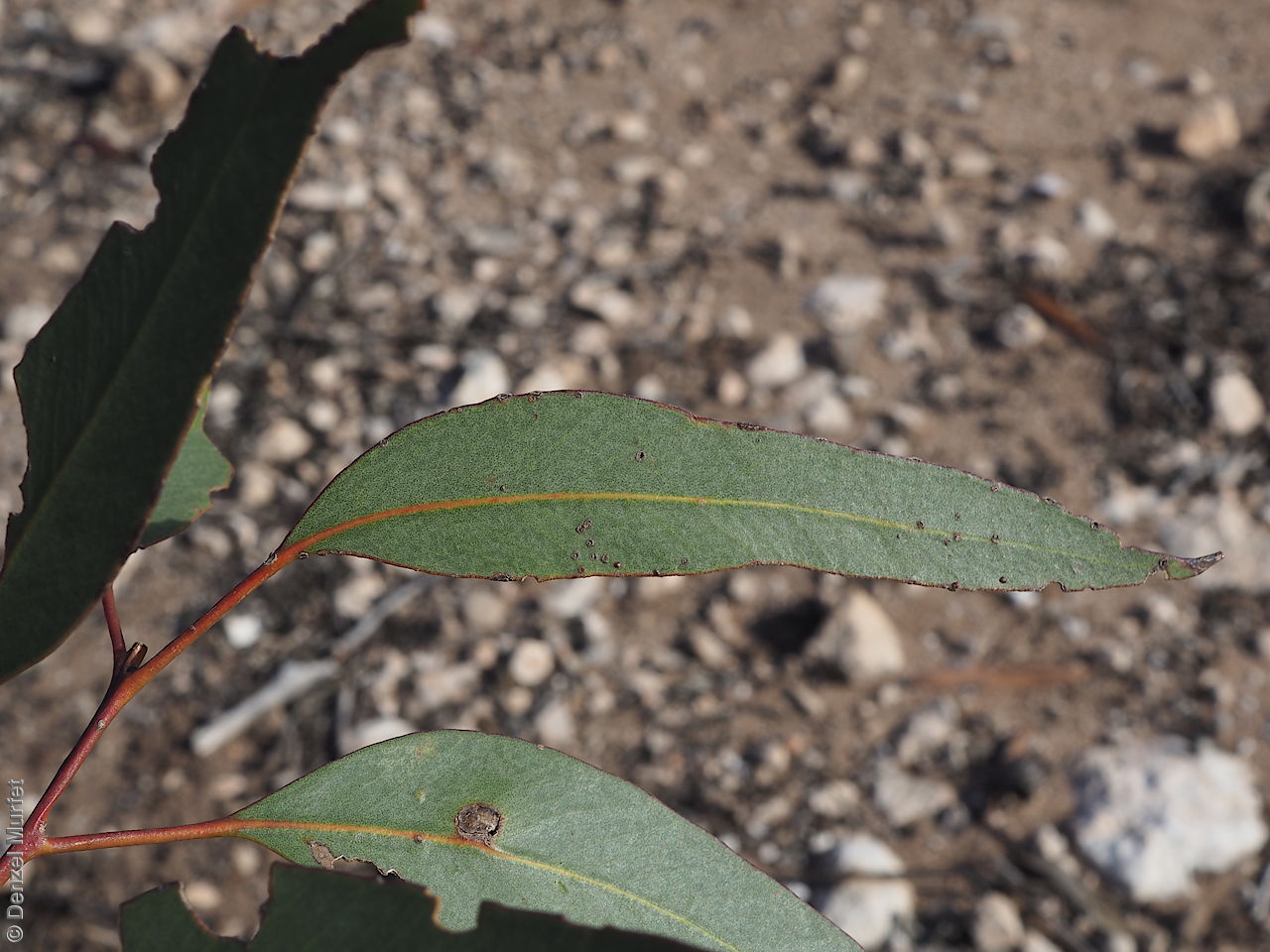
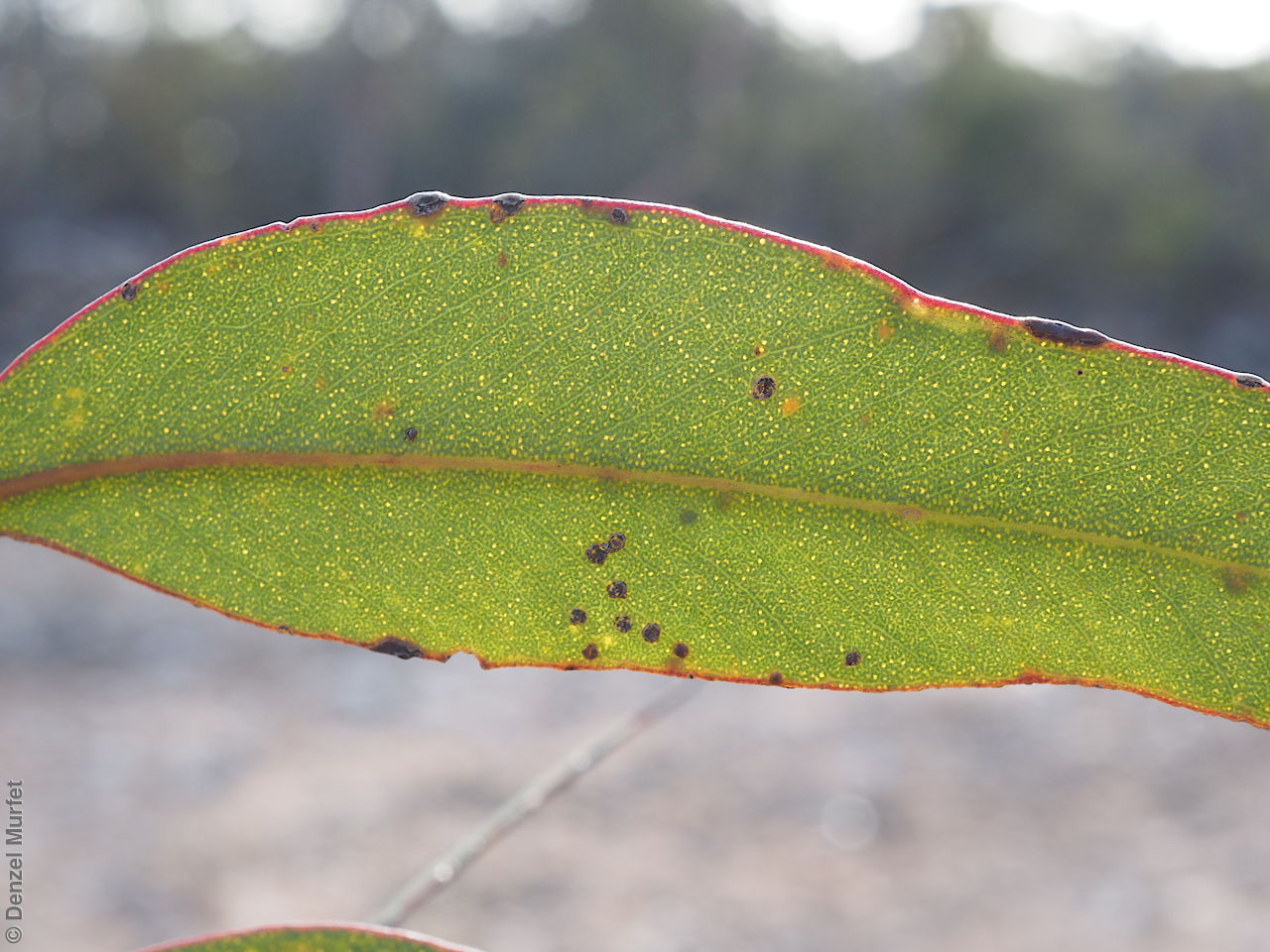
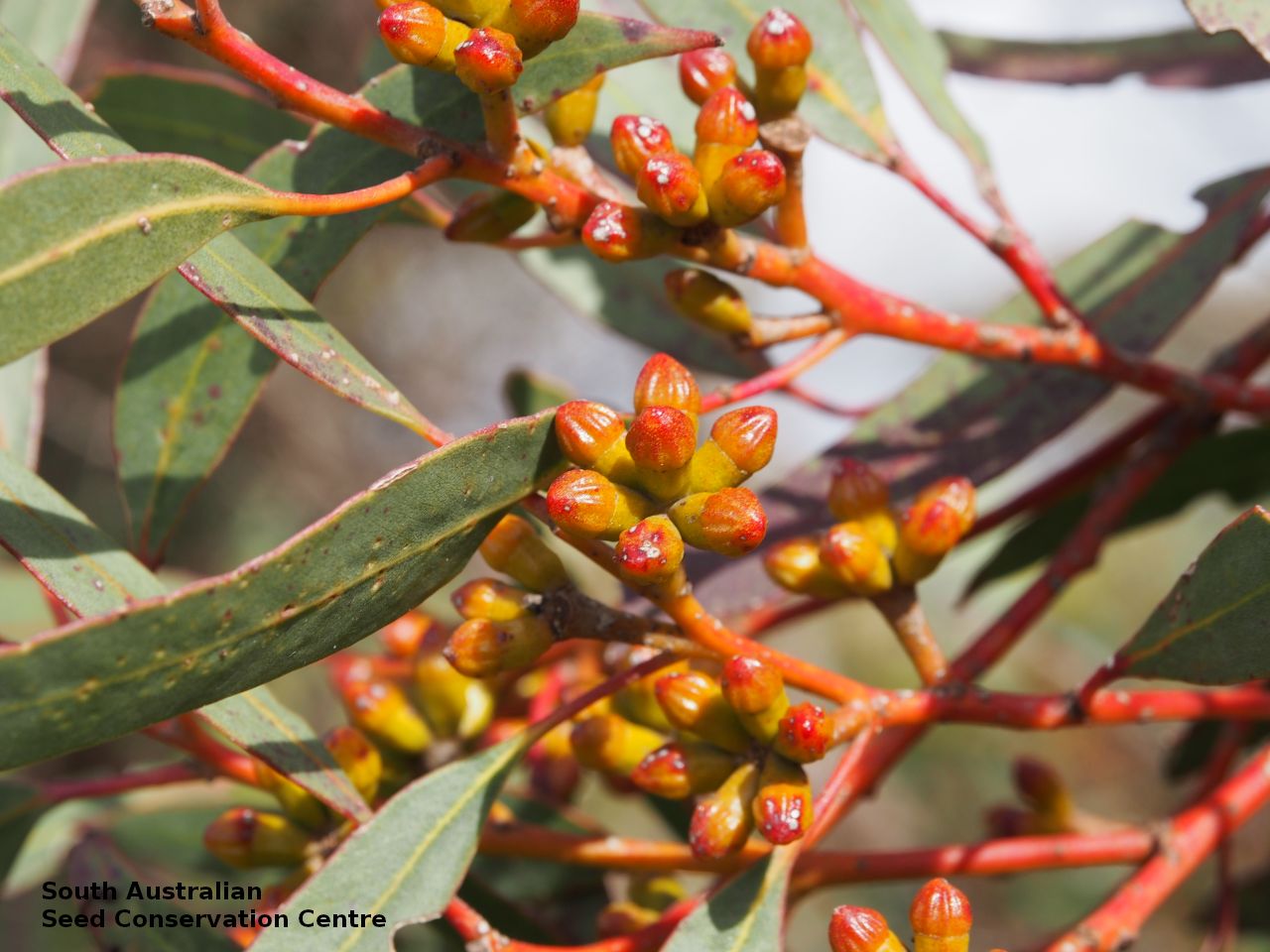
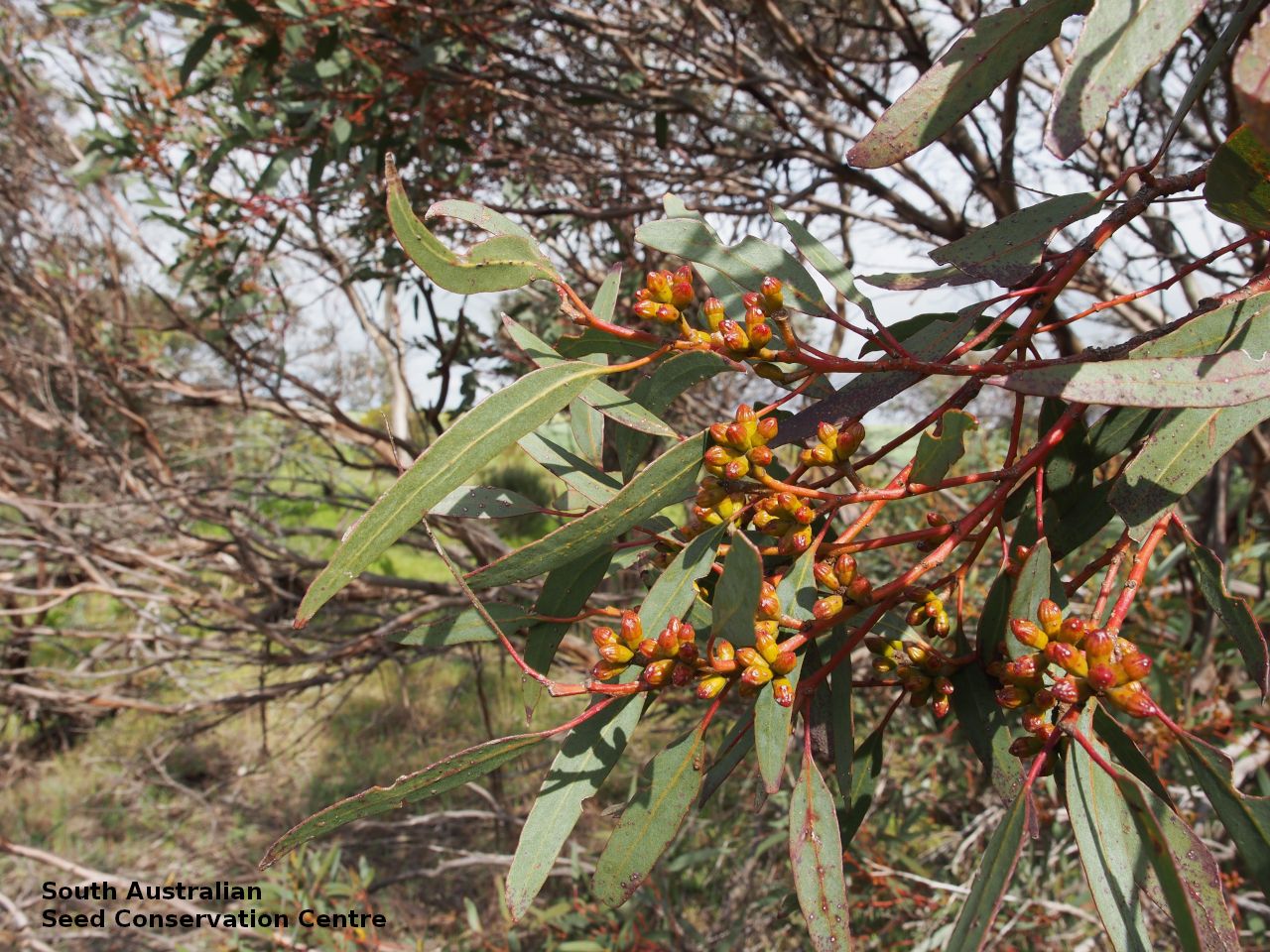
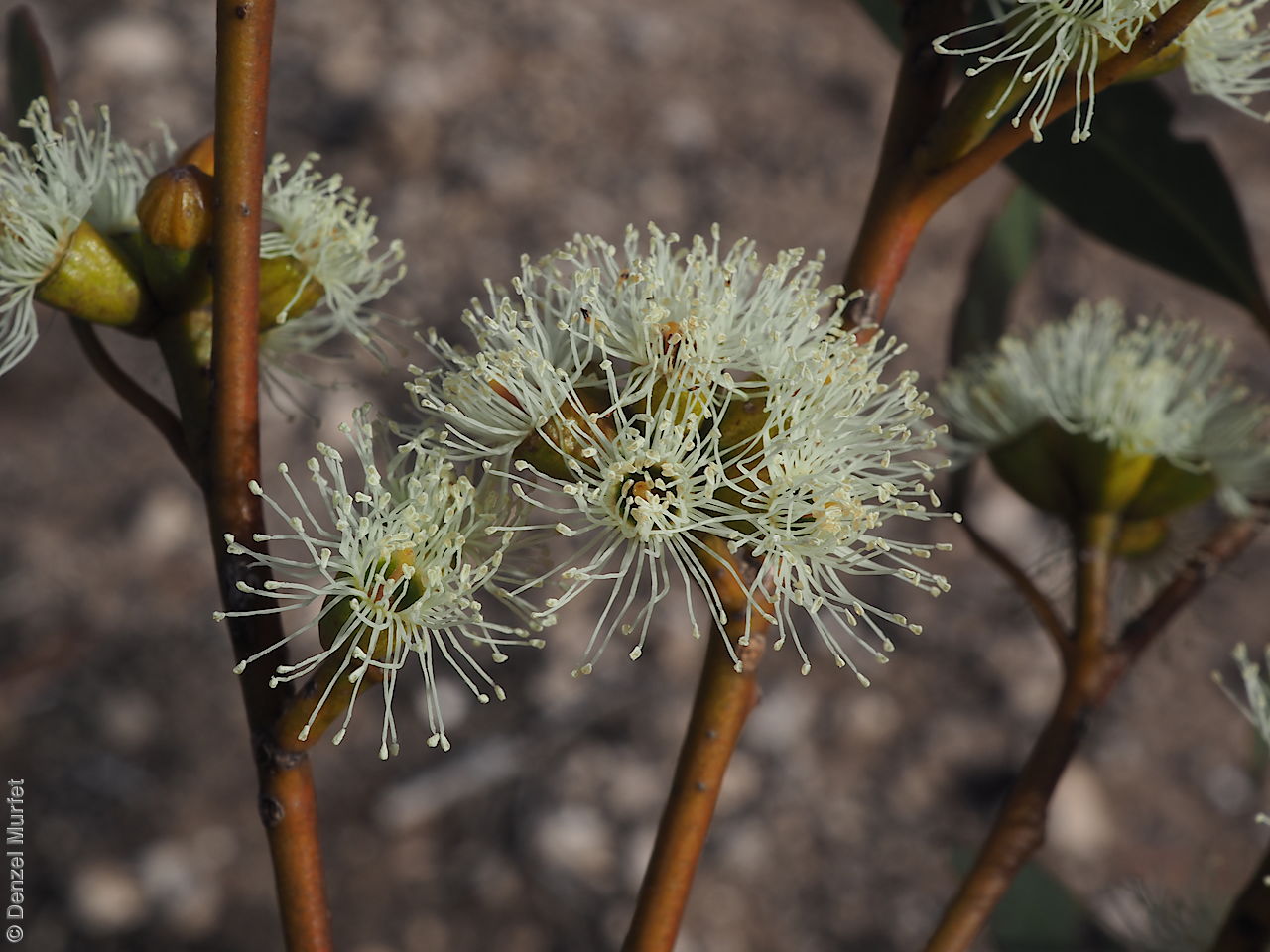
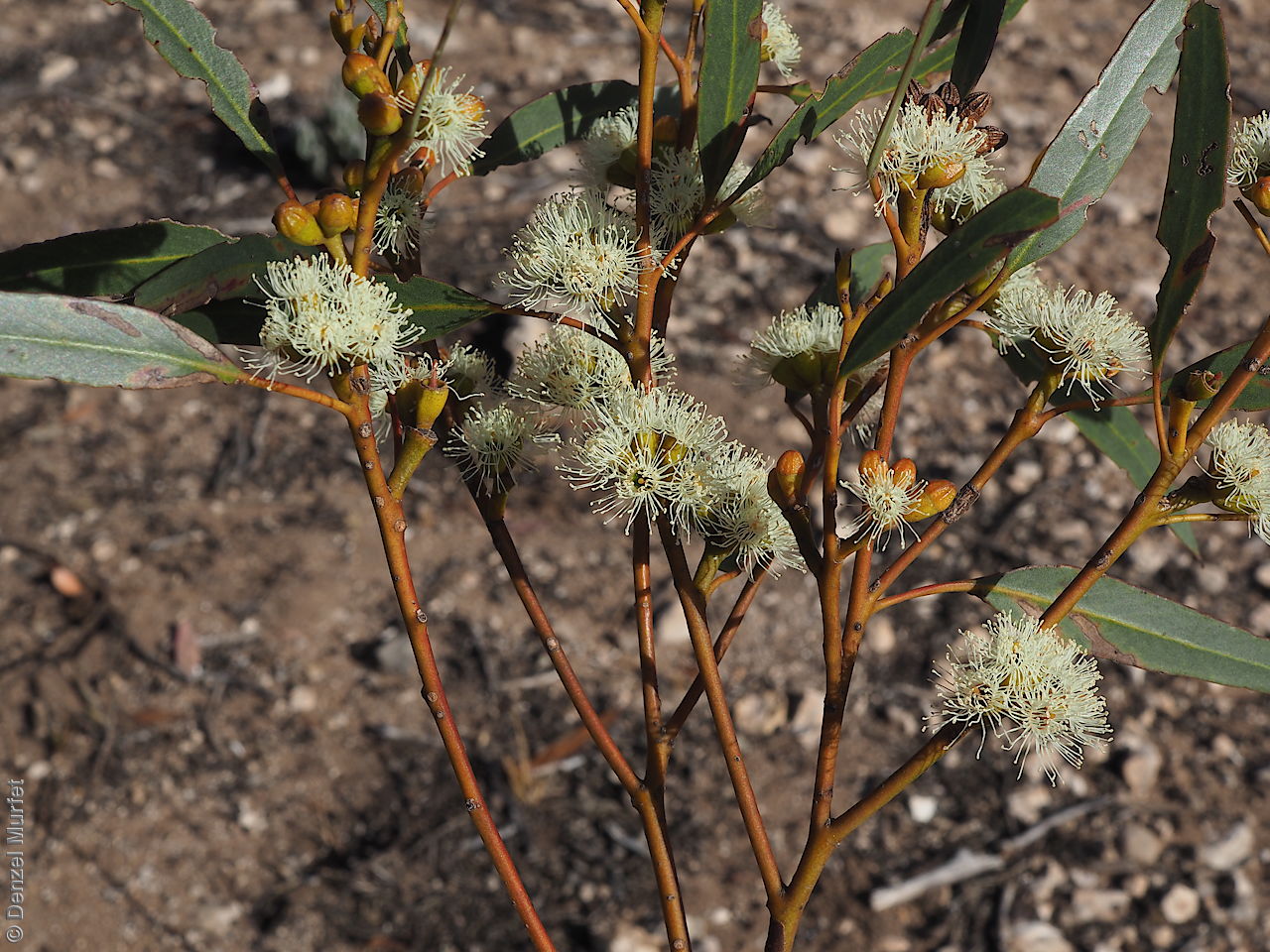
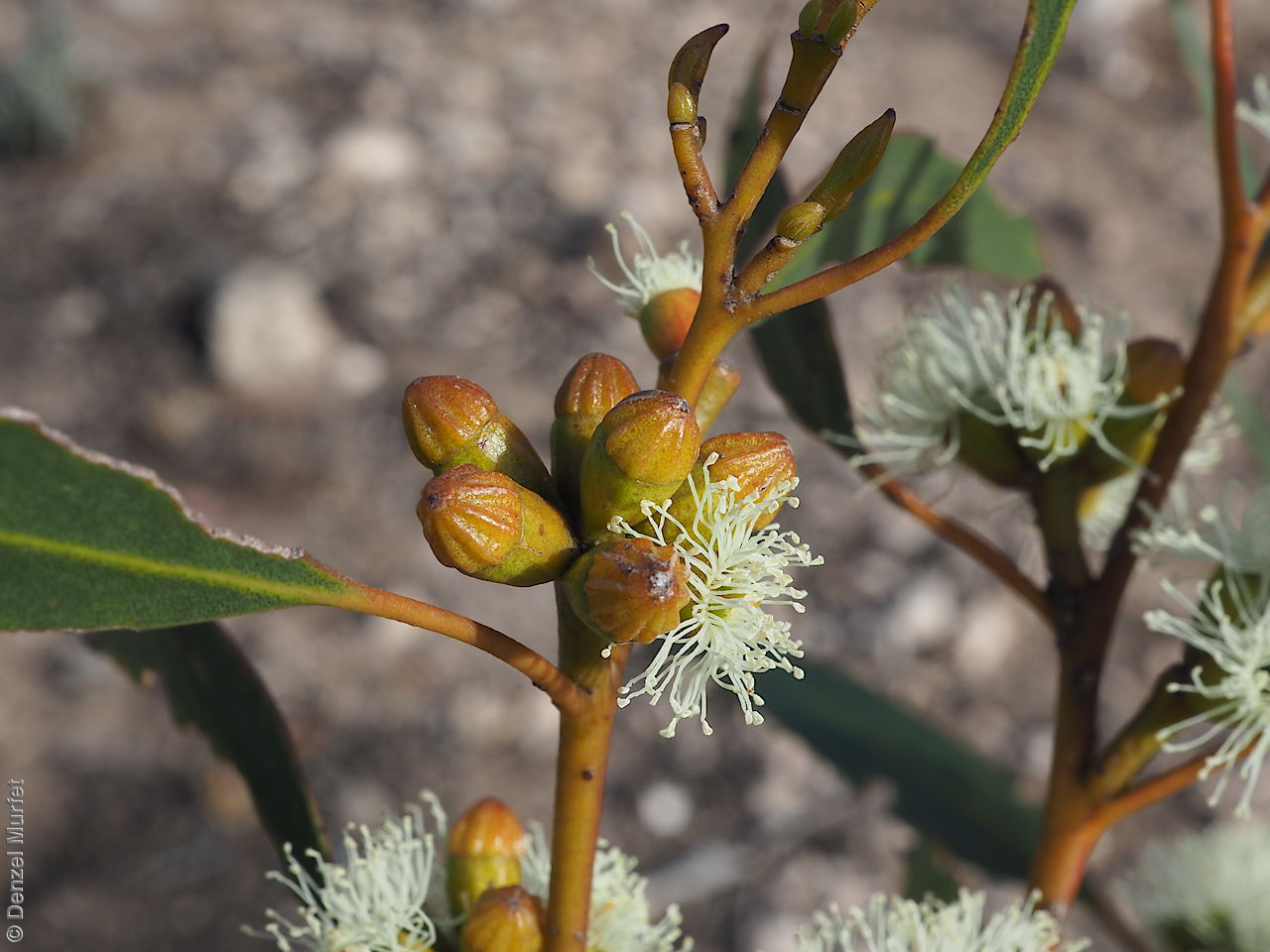
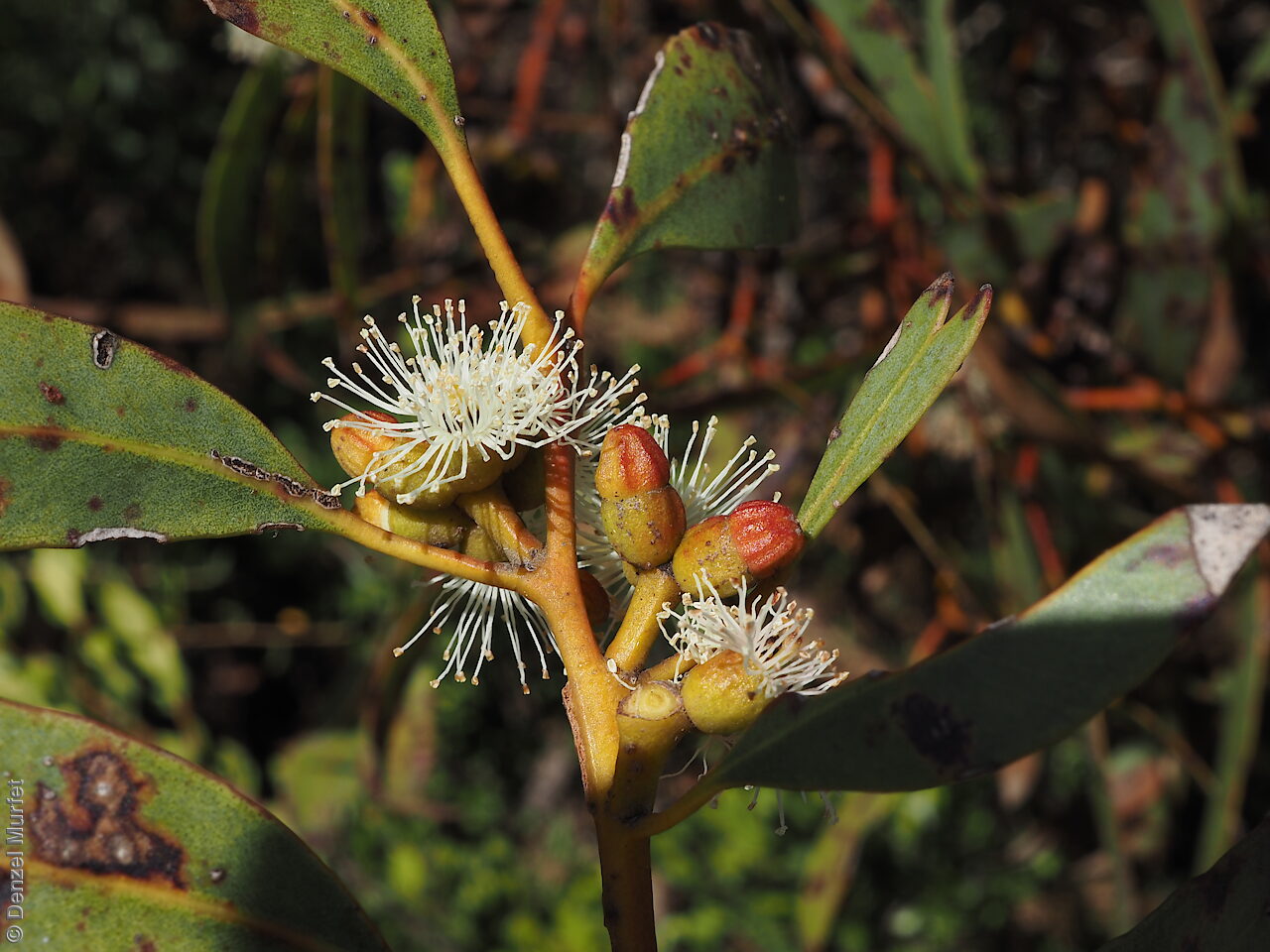
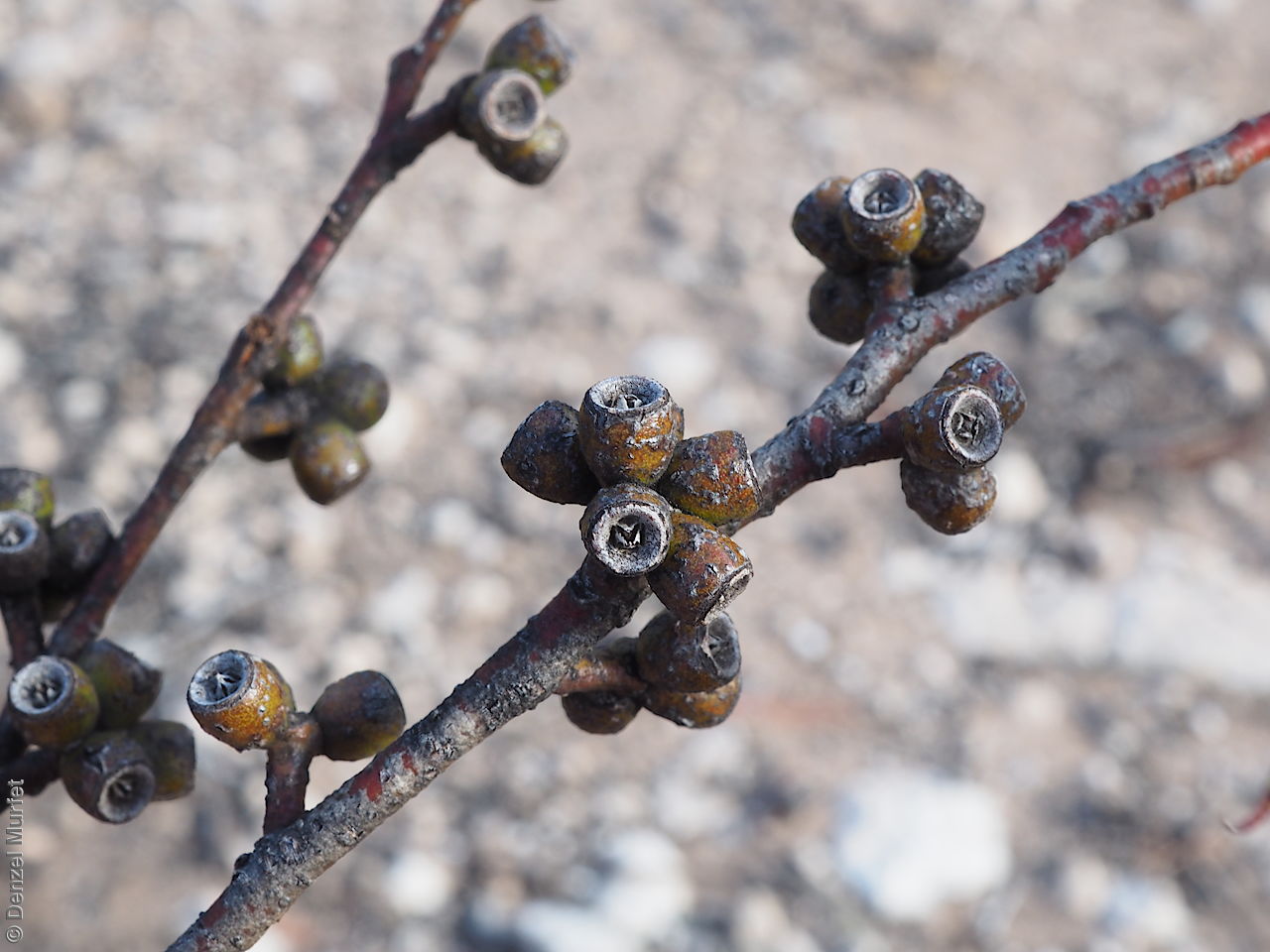
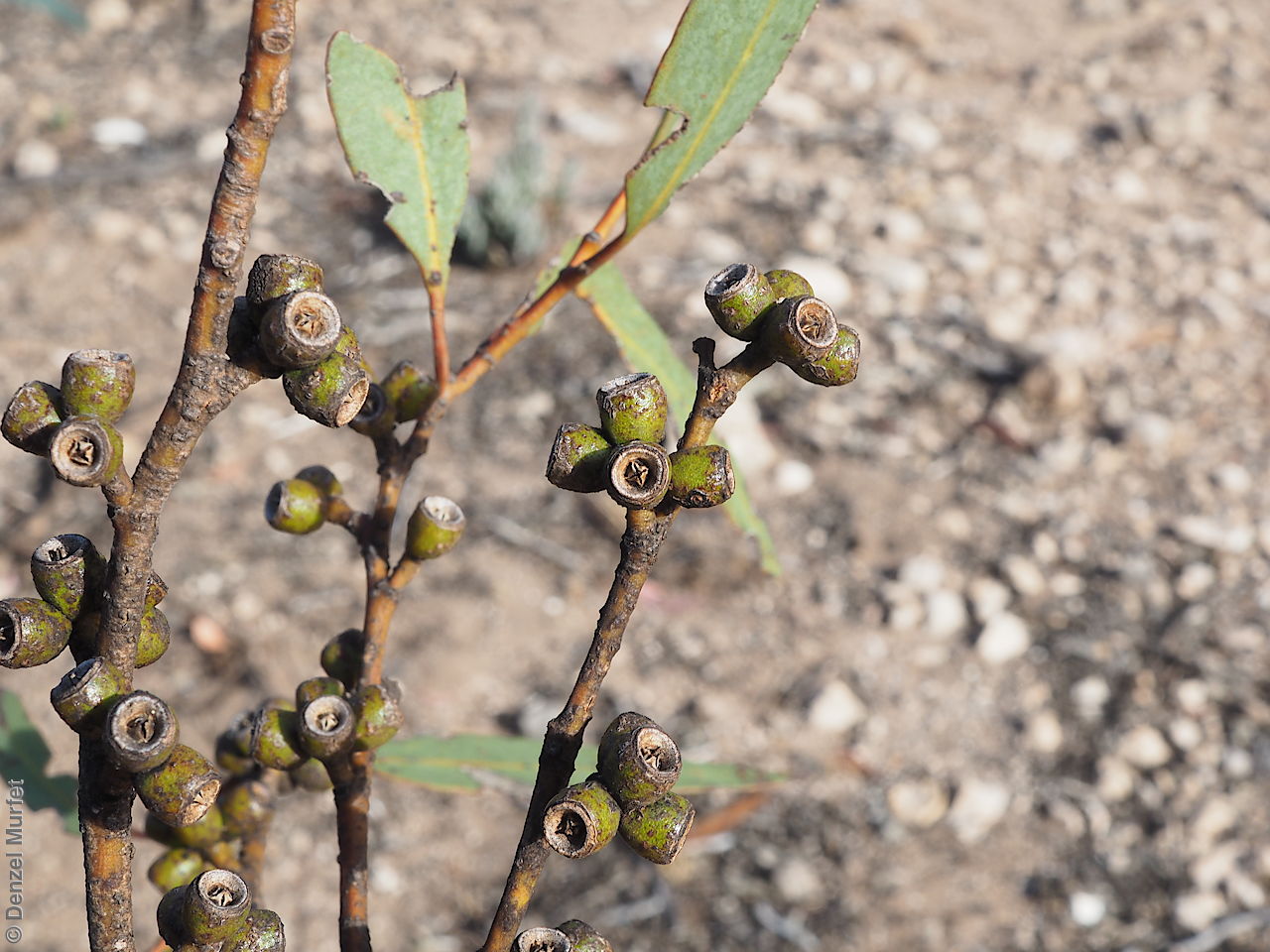
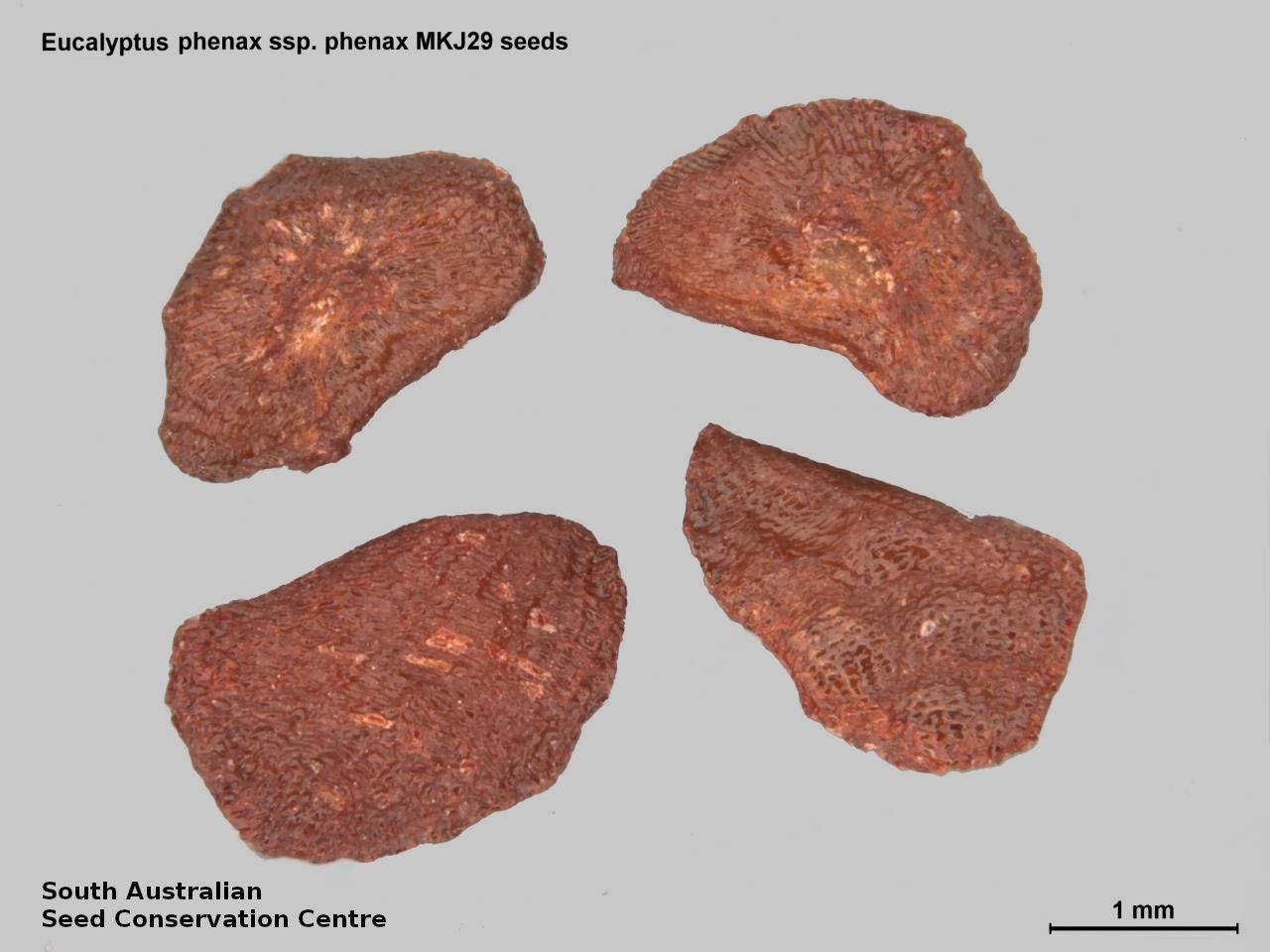

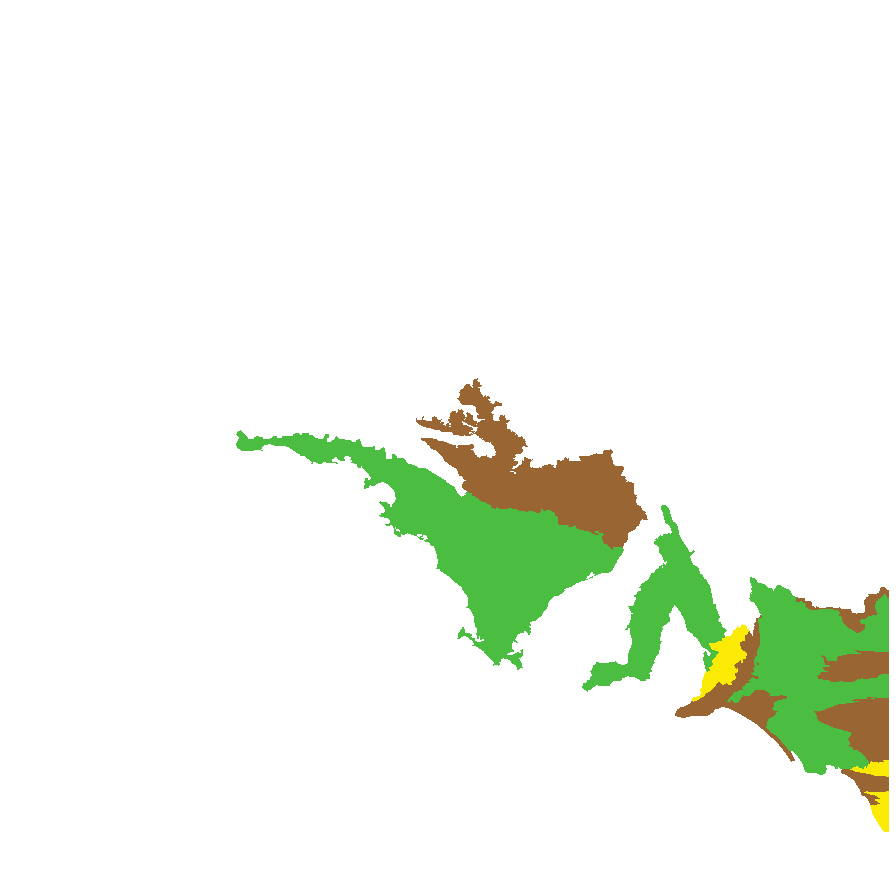
Botanical art
Prior names
Eucalyptus phenax ssp. phenax 'Hills Variant',
Eucalyptus anceps, partly
Eucalyptus 'anceps'
Common names
White Mallee
Etymology
Eucalyptus from the Greek 'eu' meaning well and 'calyptos' meaning covered, alluding to the cap or lid which covers the stamens in the bud. Phenax from the Greek meaning imposter, alluding to the species being misapplied to E. anceps.
Distribution and status
From on Eyre and Yorke Peninsulas, extending eastward to the Murray and upper South-east in South Australia, growing in mallee shrubland on loamy soils. Also found in Western Australia and Victoria. native. Uncommon in South Australia. Rare in Victoria. Common in Western Australia.
Herbarium regions: Eyre Peninsula, Northern Lofty, Murray, Yorke Peninsula, Southern Lofty, South Eastern, Green Adelaide
AVH map: SA distribution map (external link)
Plant description
Multi-trunked mallee to 7 m high with smooth, coppery to grey to cream bark throughout. Juvenile leaves ovate, dull green to slightly blue-green. Adult leaves to 120 mm long and 28 mm wide; lanceolate, maturing glossy green. Flowers in groups of 7-9 in the axils of the leaves, lacking individual stalks. Buds to 11 mm long and 5 mm wide, bud-cap round to cone-shaped, weakly ribbed; equal in width or slightly wider than the base. Flowers creamy-white appearing spring to autumn. This subspecies is distinguished from E. phenax ssp. compressa in their distributions, longer peduncles and fruits which are about equal in length and width (longer than wide in E. phenax ssp. phenax). Fruits are cup-shaped to barrel-shaped fruit to 8 mm long and 10 mm wide, lacking individual stalks; disc descending, valves 3-5 level to rim. Seeds are red ovoid seed to 2.5 mm long and 1.5 mm wide, with reticulated surface. Seed embryo type is folded.
Seed collection and propagation
Collect seeds between January and December. Collect mature fruits that are dark and hard (difficult to break with a finger nail), with the valves un-open any time of year. Leave the fruits in a breathable container in a dry room for one to two weeks. This allows the valves on the fruit to open and release the seeds. Separate the seeds by placing all the materials into a bucket and shaking it to dislodge the seeds. Pass the material through a sieve to separate the unwanted material. The finer material will contain both seeds (soft) and frass (hard) usually distinguishable from each other but can be very similar in shape and colour. With finer sieves, the seeds can be separated from the frass but this is not essential for storage or propagation. Store the seeds with a desiccant such as dried silica beads or dry rice, in an air tight container in a cool and dry place. From two collections, the seed viability was average to high, ranging from 60% to 100%. Seeds are non-dormant, viable seed should germinate readily.
| Location | No. of seeds (weight grams) | Number of plants | Date collected | Collection number Collection location | Date stored | % Viability | Storage temperature |
|---|---|---|---|---|---|---|---|
| BGA MSB | 65,000 (41.2 g) 65,000 (41.2 g) | 20 | 21-Jan-2004 | MKJ20 Eyre Peninsula | 1-Sep-2004 | 55% | +5°C, -18°C |
| BGA MSB | 2,600 (2.91 g) 2,600 (2.91 g) | 24 | 11-May-2004 | MKJ29 Southern Lofty | 1-Sep-2004 | 100% | +5°C, -18°C |
| BGA MSB | 4,300 (3.94 g) 4,300 (3.94 g) | 30 | 30-Jul-2014 | DJD2988 Eyre Peninsula | 24-Mar-2015 | 100% | -18°C |
Number of plants: This is the number of plants from which the seeds were collected.
Collection location: The Herbarium of South Australia's region name.
% Viability: Percentage of filled healthy seeds determined by a cut test or x-ray.